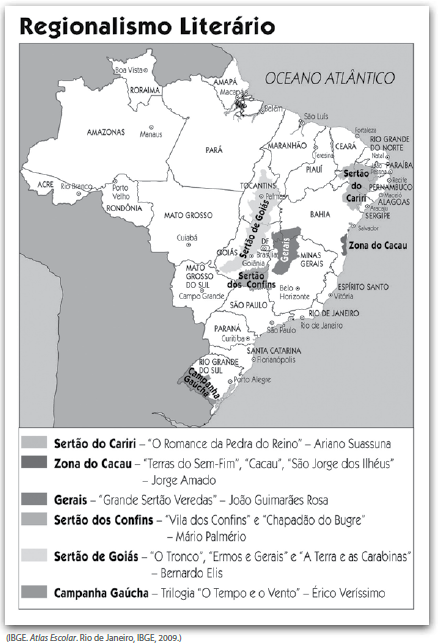Questões de Vestibular FATEC 2013 para Vestibular
Foram encontradas 54 questões
 + 3O2(g) → 2CO2 (g) + 3H2O
+ 3O2(g) → 2CO2 (g) + 3H2O  ΔH = - 1366,8kJ
ΔH = - 1366,8kJ + 25/2 O2(g) → 8 CO2(g) + 9 H2O
+ 25/2 O2(g) → 8 CO2(g) + 9 H2O  ΔH = –5 461,0 kJ
ΔH = –5 461,0 kJDadas as entalpias de formação dos compostos:
CO2(g) ΔHf = - 393 kJ/mol
H2O ΔHf = - 286 kJ/mol
ΔHf = - 286 kJ/mol
conclui-se, corretamente, que a entalpia de formação do combustível presente em I é, em kJ/mol,
Observe o esquema:

Semirreações do processo: • ânodo: H2 → 2 H+ + 2e– • cátodo: O2+ 4 H+ + 4e– → 2 H2O
Sobre a célula de hidrogênio esquematizada, é correto afirmar que
A seguir, temos a reação que representa o descrito:
3 Ca(OH)2 + Al2 (SO4)3 → 3 CaSO4 + 2 Al(OH)3
A etapa descrita é denominada
Dados: Massas Molares (g/mol): NaOH = 40 e HCl = 36,5 Reação: NaOH + HCl → NaCl + H2O
Sobre o resultado da titulação, é correto afirmar que a informação
FACHADA DO PARTENON
 (fotos.sapo.pt/asergio/pic/00029e3c. Acesso em: 05.10.2013. Original colorido)
(fotos.sapo.pt/asergio/pic/00029e3c. Acesso em: 05.10.2013. Original colorido) 
Esse músico deseja afinar seu instrumento utilizando a frequência da nota Lá (10º termo). A frequência que ele deverá utilizar, em hertz, é igual a
Adote: log 1,08 = 0,03 log 2 = 0,30 M = C. (1 + i) n

(kazimir-malevich.org/Suprematism-(with-Blue-Triangle-AndBlack-Rectangle).html. Acesso em: 01.10.2013. Original colorido)
Considere que as três informações a seguir são verdadeiras: • O“Triângulo azul”é equilátero, com lados medindo 32 cm. • O“Retângulo preto”tem dimensões de 30 cm x 60 cm. • Um dos lados do“Retângulo preto”intercepta os pontos médios de dois lados do “Triângulo azul”.
É correto afirmar que a área da pintura ocupada pela composição das figuras “Retângulo preto” e “Triângulo azul” é, em cm², igual a
Raio (mm) Altura (mm) cabeça 4 1 corpo 3 60 ponta 3 2
Lembre-se: O volume de um cone com raio da base r e altura h é igual a um terço do volume de um cilindro com raio da base r e altura h.
O volume mínimo de aço necessário para produzir 100 pregos é, em mm³,
(I) que o submarino descrito esteja completamente estático, totalmente submerso e próximo à lâmina d’água, em uma determinada região do oceano que possui campo gravitacional constante; (II) que o submarino descrito esteja navegando à velocidade máxima de forma constante, totalmente submerso e próximo à lâmina d’água, em uma determinada região do oceano que possui campo gravitacional constante.
Desprezando a coluna d’água acima do submarino, podemos afirmar que o empuxo produzido na situação (I) e a quantidade de movimento gerada na situação (II), respectiva e aproximadamente, são
✔ a a motora ou propulsão; ✔ a de resistência do ar ou arrasto; ✔ a a peso; ✔ a a de empuxo ou sustentação.

(preview.tinyurl.com/forcasaviao acesso em 26.10.2013. Original colorido)
Caso um avião voe em velocidade constante e permaneça à mesma altitude, é correto afirmar que a somatória das
Considerando essas informações, podemos afirmar, corretamente, que a velocidade média do trem britânico equivaleria, em relação à velocidade média do Hyperloop, aproximadamente, a
Podemos afirmar, portanto, que a energia convertida e armazenada pelo dispositivo KERS, em forma de energia útil, é a energia
“É uma questão de reflexo. Se um prédio é curvilíneo e tem várias janelas planas, que funcionam como espelhos, os reflexos se convergem em um ponto” diz Chris Shepherd, do Instituto de Física de Londres. O edifício de 37 andares, ainda em construção, é de fato um prédio curvilíneo e o carro, um Jaguar, estava estacionado em uma rua próxima ao prédio, exatamente no ponto atingido por luzes refletidas e não foi o único que sofreu estrago. O fenômeno é consequência da posição do Sol em um determinado período do ano e permanece nessa posição por duas horas por dia. Assim, seus raios incidem de maneira oblíqua às janelas do edifício.

(bbc.co.uk/portuguese/noticias/2013/09/130904_como_luzrefletida_derrete_carro_an.shtml Acesso em: 13.09.2013. Adaptado. Foto: Original colorido)
Considerando o fato descrito e a figura da pessoa observando o reflexo do Sol no edifício, na mesma posição em que estava o carro quando do incidente, podemos afirmar corretamente que o prédio se assemelha a um espelho

Considerando a geografia econômica brasileira e observando o mapa do regionalismo literário, podemos afirmar que